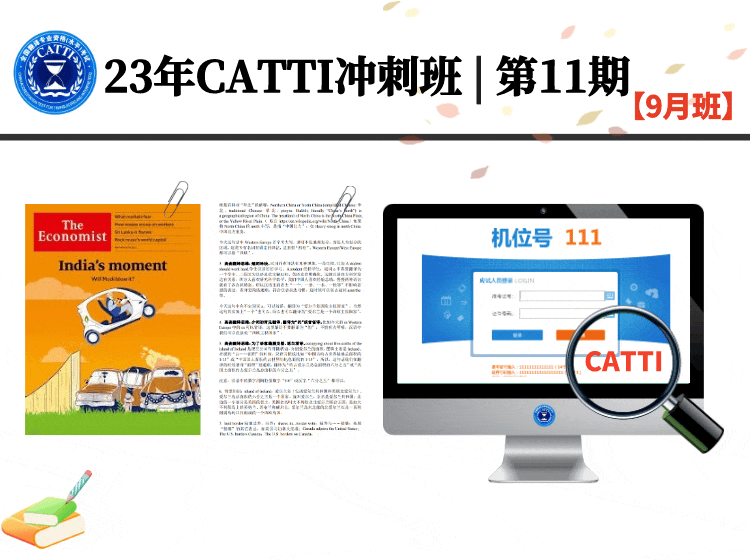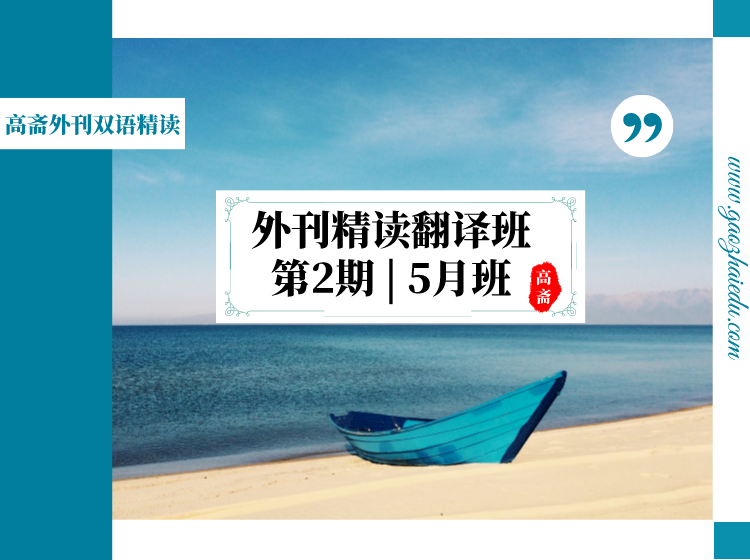2014年5月CATTI三级笔译实务真题
Section 1: English-Chinese Translation (50 points) Translate the following passage into Chinese.
As icebergs in the Kayak Harbor pop and hiss while melting away, this remote Arctic town and its culture are also disappearing in a changing climate.
Narsaq’s largest employer, a shrimp factory, closed a few years ago after the crustaceans fled north to cooler water. Where once there were eight commercial fishing vessels, there is now one.
As a result, the population here,one of southern Greenland’s major towns, has been halved to 1,500 in just a decade. Suicides are up. “Fishing is the heart of this town,” said Hans Kaspersen, 63, a fisherman. “Lots of people have lost their livelihoods.” But even as warming temperatures are upending traditional Greenlandic life, they are also offering up intriguing new opportunities for this state of 57,000 — perhaps nowhere more so than here in Narsaq.
Vast new deposits of minerals and gems are being discovered as Greenland’s massive ice cap recedes, forming the basis of a potentially lucrative mining industry. One of the world’s largest deposits of rare earth metals — essential for manufacturing cellphones, wind turbines and electric cars — sits just outside Narsaq.
It has long been known that Greenland sat upon vast mineral lodes, and the Danish government has mapped them intermittently for decades. Niels Bohr, Denmark’s Nobel Prize-winning nuclear physicist and a member of the Manhattan Project visited Narsaq in 1957because of its uranium deposits.
But previous attempts at mining mostly failed, proving too expensive in the inclement conditions. Now, warming has altered the equation.
Greenland’s Bureau of Minerals and Petroleum, charged with managing the boom, currently has 150 active licenses for mineral exploration, up from 20 a decade ago.
Altogether, companies spent$100 million exploring Greenland’s deposits last year, and several are applying for licenses to begin construction on new mines, bearing gold, iron and zinc and rare earths. There are also foreign companies exploring for offshore oil.
The Black Angel lead and zinc mine,which closed in 1990, is applying to reopen this year, said Jorgen T.Hammeken-Holm, who oversees licensing at the country’s mining bureau, “because the ice is in retreat and you’re getting much more to explore.” The Greenlandic government hopes that mining will provide new revenue. In granting Greenland home rule in 2009,Denmark froze its annual subsidy, which is scheduled to be decreased further in the coming years. Here in Narsaq, a collection of brightly painted homes bordered by spectacular fjords, two foreign companies are applying to the government for permission to mine.
That proximity promises employment, and the company is already schooling some young men in drilling and in English, the international language of mine operations. It plans to build a processing plant, a new port and more roads. (Greenland currently has none outside of settled areas.) Narsaq’s tiny airport, previously threatened with closure from lack of traffic, could be expanded. A local landlord is contemplating converting an abandoned apartment block into a hotel. “There will be a lot of people coming from outside and that will be a big challenge since Greenlandic culture has been isolated,” said Jasper Schroder, a student home in Narsaq from university in Denmark.
Still, he supports the mine and hopes it will provide jobs and stem the rash of suicides, particularly among his peers; Greenland has one of the highest suicide rates in the world. “People in this culture don’t want to be a burden to their families if they can’t contribute,” he said.
But not all are convinced of the benefits of mining. “Of course the mine will help the local economy and will help Greenland, but I’m not so sure if it will be good for us,” said Dorothea Rodgaard, who runs a local guesthouse. “We are worried about the loss of nature.”
中华民族历经磨难,自强不息,从未放弃对美好梦想的向往和追求。实现中华民族伟大复兴的中国梦是近代以来中华民族的夙愿。
在新的历史时期,中国梦的本质是国家富强、民族振兴、人民幸福。我们的奋斗目标是,到 2020 年国内生产总值和城乡居民人均收入在 2010 年基础上翻一番,全面建成小康社会。到本世纪中叶,建成富强民主文明和谐的社会主义现代化国家,实现中华民族伟大复兴的中国梦。
实现中国梦,必须坚持中国特色社会主义道路。我们已经在这条道路上走了 30 多年, 历史证明,这是一条符合中国国情、富民强国的正确道路,我们将坚定不移地沿着这条道路走下去。实现中国梦,必须弘扬中国精神。用以爱国主义为核心的民族精神和以改革创新为核心的时代精神振奋起全民族的“精气神”。
实现中国梦,必须凝聚中国力量。空谈误国,实干兴邦。我们要用 13 亿中国人的智慧和力量,一代又一代中国人不懈的努力,把我们的国家建设好,把我们的民族发展好。
实现中国梦,必须坚持和平发展。我们将始终不渝走和平发展道路,始终不渝奉行互利共赢的开放战略,不仅致力于中国自身发展,也强调对世界的责任和贡献;不仅造福中国人民,而且造福世界人民。实现中国梦给世界带来的是和平,不是动荡;是机遇,不是威胁。
Section 2: Chinese-English Translation (50 points) Translate the following passage into English.
|
2014年5月CATTI三级笔译实务真题
文章来源:高斋翻译学堂
发布时间:2019-10-25 13:52
作者:高斋翻译学堂
点击:次
|






